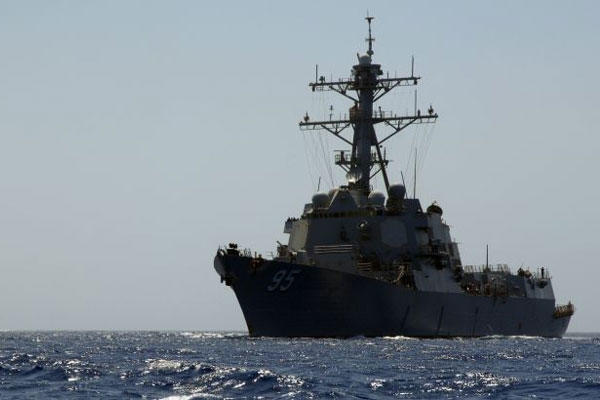The U.S. Navy is in the very early stages of developing a new destroyer -- called the Future Surface Combatant -- which will replace the existing Arleigh Burke-class destroyers and enter service by the early 2030s, Navy leaders told Military.com.
Navy officials said it is much too early to speculate on hull design or shape for the new ship but lasers, on-board power-generation systems, increased automation, next-generation weapons, sensors and electronics are all expected to figure prominently in the development of the vessel.
The Future Surface Combatant will succeed and serve alongside the Navy's current Flight III DDG 51 Arleigh Burke-class destroyer program slated to being construction in 2016. Overall, the Secretary of the Navy's long-range shipbuilding plan calls for construction of 22 Flight III DDGs, Navy officials said.
There are a handful of early emerging requirements regarding what admirals want for the ship, Rear Adm. Tom Rowden, director of surface warfare, told Military.com in an interview.
"I could not even draw a picture for you," said Rowden, who went on to explain that greater automation and integrated electrical power are part of the calculus of early discussions.
He emphasized that the new ship will leverage successful next-generation technologies already underway in other platforms such as the DDG 1000 destroyer, Littoral Combat Ship and Ford-class aircraft carriers.
The Future Surface Combatant may draw from the DDG 1000's high-tech electric drive system that propels the ship while generating 58 megawatts of on-board electrical power. On-board power will be in high demand as lasers and directed energy weapons become more prominent, Rowden said.
"We are moving all ahead with respect to the development of lasers as a weapon in the future. You can take the power that is generated on the ship and convert that into a fire control solution without having to shoot a missile that may cost a million to ten million," Rowden explained.
In fact, low-cost laser weapons are a way to help stay ahead of the cost curve on future destroyers, he added.
"One of the things I am concerned about is if our enemy can develop a million dollar missile but we have to shoot ten million dollars worth of missiles in order to ensure that they don't inflict damage on our ship – we're on the wrong side of the cost curve," he said.
Navy leaders will emphasize lethality and survivability as initial requirements are developed for the new destroyer. Rowden explained that the new destroyer will, among other things, be tasked with protecting America's aircraft carriers.
The largest aspect of emphasis for the nascent Future Surface Combatant program is something Rowden called modularity, a term referring to a technological ability to rapidly and effectively make adjustments as needed.
The new ship design will emphasize flexibility to ensure the platform keeps pace with fast-moving technological change and threats, he said.
"You have to understand that in order to maintain the relevance of the combat system, you have to have a combat system that can evolve with the threat. If you integrate the ship so tightly that you have to take the ship apart in order to integrate the combat system -- then that adds significant cost to maintaining the relevance of the ship," Rowden said.
This approach is designed to ensure the platform keeps pace with emerging innovations in weaponry, electronics, computing and sensors.
"The modules that we install in the ship may have no bearing or resemblance to what needs to be there when we decommission the ship. The weapons and sensors will be different. We have to think about how to move through the design, manufacture and subsequent upgrades in the most cost-effective and affordable fashion. We need to design that into the ship," he said.
-- Kris Osborn can be reached at kris.osborn@monster.com





























